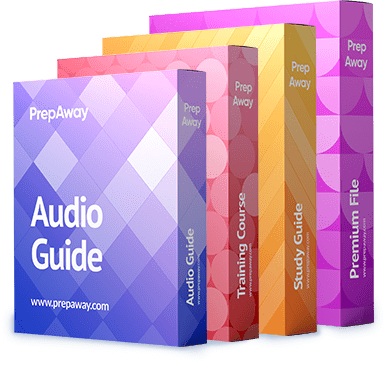
PL-300: Microsoft Power BI Data Analyst Certification Video Training Course
The complete solution to prepare for for your exam with PL-300: Microsoft Power BI Data Analyst certification video training course. The PL-300: Microsoft Power BI Data Analyst certification video training course contains a complete set of videos that will provide you with thorough knowledge to understand the key concepts. Top notch prep including Microsoft PL-300 exam dumps, study guide & practice test questions and answers.
PL-300: Microsoft Power BI Data Analyst Certification Video Training Course Exam Curriculum
Introduction
-
4:42
1. What are we going to learn?
-
5:21
2. Installing Power BI Desktop
Part 1 Level 1: Creating and formatting a table visualization
-
0:58
1. Welcome to Part 1: Visualizations
-
5:07
2. Importing from Excel, and Creating our first visualization
-
5:36
3. Viewing data
-
3:06
4. Focus mode and Different visualizations
-
6:10
5. Why do I need a Work email address? And how can I get one, if I don't have it?
-
5:09
6. Saving visualization to the Desktop and to the Power BI service
-
07:23
7. Practice Activity Number 1 - The Solution
Part 1 Level 2: Formatting our first visualization
-
2:45
1. The New Format Pane
-
4:53
2. Formatting font and font size
-
5:20
3. Formatting colors
-
6:47
4. Stylistic options
-
5:45
5. Position visuals
-
4:34
6. Align visuals
-
2:45
7. Format Painter
-
10:01
8. Configuring summarization, both default and in a specific visualization
-
7:07
9. Changing number and date formatting
-
5:25
10. Custom number and date formatting
-
7:59
11. Practice Activity Number 2 - The Solution
Part 1 Level 3: Creating different visualizations: Martices and bar charts
-
7:01
1. Matrix
-
8:24
2. Drill down data, see data and records, and export data
-
6:52
3. Stacked bar charts and switch theme for reports
-
4:47
4. Bar Chart formatting, including continuous versus categorical axes
-
8:32
5. Configure interactions between visual (Edit interactions)
-
5:47
6. Clustered and 100% Stacked bar charts
-
6:08
7. Line and area charts, including 8b. Configure duplicate pages
-
8:28
8. Combo charts (Line and column charts)
-
7:42
9. Practice Activity Number 3 - The Solution
Part 1 Level 4: Adding more control to your visualizations
-
9:02
1. Adding Text boxes, Images and Shapes
-
6:58
2. Visual level, page level and report level filters - basic filters
-
10:40
3. Advanced Filtering
-
5:28
4. Filter Top N Items
-
7:21
5. Slicer
-
5:17
6. Synchronizing slicers to multiple pages
-
3:16
7. Slicer Warning
-
7:25
8. Sort visuals
-
8:22
9. Configure small multiples
-
6:11
10. Use Bookmarks for reports
-
3:48
11. ** Group and layer visuals by using the Selection pane
-
10:59
12. Drillthrough
-
13:20
13. Buttons and Actions
-
8:14
14. Enable Natural Language Queries (Ask A Question) and Page Formatting
-
9:00
15. Tooltip Pages
-
6:14
16. Page and Bookmark Navigator
-
10:18
17. Practice Activity Number 4 - The Solution
Part 1 Level 5: Other virtualizations
-
6:22
1. Ribbon charts
-
8:03
2. Waterfall charts
-
10:08
3. Scatter, bubble and dot charts
-
4:55
4. Pie charts and donut charts
-
2:26
5. Treemaps
-
2:44
6. Funnel charts
-
3:05
7. Adding Marketplace visualizations (Import a Custom Visual)
-
7:27
8. Practice Activity Number 5 - The Solution
Part 1 Level 6: Mapping
-
7:30
1. Maps
-
4:46
2. Formatting maps
-
7:16
3. Adding Data Categories
-
10:09
4. Filled Maps,Conditional Formatting, and color blindness
-
8:24
5. Creating hierarchies
-
10:32
6. ArcGIS Maps for Power BI
-
12:45
7. Practice Activity Number 6 - The Solution
Part 1 Level 7: Measure performance by using KPIs, gauges and cards
-
5:50
1. Gauges
-
4:44
2. Cards and Multi-row cards
-
7:55
3. More conditional formatting
-
4:14
4. KPIs
-
16:01
5. Practice Activity Number 7 - The Solution
Part 1 Level 8: Other Visualization Items for the exam
-
7:16
1. Define quick measures
-
3:57
2. Export report data
-
9:37
3. Create reference lines by using Analytics pane, including the Forecast feature
-
6:05
4. Use error bars
-
3:23
5. Identify outliers
-
3:40
6. ** Use clustering
-
5:10
7. Use Anomaly Detection
-
6:47
8. Use groupings and binnings
-
8:44
9. Use the AI Visual Key Influencers to explore dimensional variances
-
5:39
10. ** Use the Analyze feature in Power BI
-
6:04
11. Use the AI Visual decomposition tree visual to break down a measure
-
6:00
12. Creating a paginated report
-
6:53
13. Exploring Power BI Report Builder
Additional videos - Visualize and Analyze the data
-
5:45
1. Design and configure for accessibility
-
6:18
2. Add a Smart Narrative visual
-
4:17
3. R and Python Visualizations
-
3:06
4. Use or create a PBIDS file
End of Part 1
-
1:05
1. End of Part 1
Part 2 Get and Transform Data: Level 1- Home Part 1
-
1:48
1. Welcome to Part 2: Get and Transform Data
-
4:51
2. Introduction - let's Get some more Data
-
9:05
3. Exploring the Power Query Editor interface
-
9:15
4. Introducing the M language
-
4:18
5. Let's start look at the Home tab
-
06:05
6. Home menu - Manage Columns
-
07:26
7. Home menu - Reduce Rows and Use First Row as Headers
-
7:16
8. Practice Activity Number 8 - The Solution
Part 2 Level 1- Get Data - Home
-
5:52
1. Sort and Filter
-
7:13
2. Split Column
-
9:50
3. Other Transform activities
-
6:10
4. Practice Activity Number 9 - The Solution
Part 2 Level 2 - Getting Multiple files
-
6:07
1. Merge Queries and Expand Table
-
6:54
2. Merge Queries with Group By, and different types of Joins
-
4:33
3. Appending two queries together
-
6:30
4. Appending three or more queries together + resolving a problem with data types
-
9:17
5. Combine Files (getting information from a folder)
-
15:44
6. Practice Activity Number 10 - The Solution
Part 2 Level 3 - Transform Menu
-
5:27
1. Transform - Table and Any Column
-
9:54
2. Pivot Column
-
10:30
3. Unpivot
-
7:07
4. Practice Activity 11 - The Solution
-
9:57
5. Unpivot in conjunction with other Transform features
-
5:39
6. Practice Activity 12 - The Solution
Part 2 Level 4 - Transform - Text and Numbers
-
5:53
1. Transform/Add Column - Text - Format
-
7:40
2. Transform/Add Column - Text - Merge Columns
-
6:53
3. Transform/Add Column - Text - Extract
-
10:57
4. Transform/Add Column - Text - Parse
-
6:10
5. Transform/Add Column - Number Column - Statistics and Standard
-
4:59
6. Transform/Add Column - Other Number Column functions
-
12:58
7. Practice Activity Number 13 - The Solution
Part2 Level 5 - Transform - Dates and Time
-
7:50
1. Creating a list of dates
-
8:34
2. Transform/Add Column - Date
-
8:45
3. Transform/Add Column - Dates in other cultures/languages
-
6:26
4. Transform/Add Column - Time
-
3:14
5. Transform/Add column - Duration
-
7:27
6. Practice Activity Number 14 - The Solution
Part2 Level 6 - Add Colums, View and Help Menus
-
13:19
1. Column from examples
-
10:25
2. Conditional Column
-
4:07
3. Resolving Errors from Conditional Columns
-
3:42
4. Index Column and Duplicate Column
-
9:00
5. Custom Column - If Then Else
-
3:27
6. Converting text from a different locale to a number
-
9:46
7. Practice Activity Number 15 - The Solution
Part2 Level 7 - View and Help menus and advanced functionality
-
5:40
1. Other M Functions
-
5:24
2. View and Help menus, including Column Properties
-
02:22
3. Profile the data
-
4:17
4. Advanced Editor
-
11:45
5. Functions and Parameters
-
4:45
6. DateTimeZone date type and Functions
-
11:03
7. Worked Practice Activity Number 16 - Dividing Annual data into Months
Part2 Level 8 - Get other types of data
-
5:51
1. Introduction to SQL Server
-
5:41
2. Importing database data into Power BI, and Query Folding
-
5:07
3. Select a storage mode
-
6:30
4. Expanding multiple tables in SQL Server
-
5:49
5. Importing data from SQL Server Analysis Services (SSAS)
-
7:24
6. Setting up Azure SQL Database
-
8:34
7. Using Azure SQL Database in Power BI
-
4:49
8. Use the Microsoft Dataverse
-
4:24
9. Configure data loading
Additional videos - Get and Transform
-
5:17
1. * Automatic page refresh
-
6:16
2. * Using Big Data
-
5:28
3. * Resolve problems
-
4:37
4. * Identify query performance issues, including Query Diagnostics
-
5:20
5. * Apply AI Insights
End of Part2
-
1:14
1. End of Part2
Part 3 Level 1: Creating a Data Model
-
1:34
1. Welcome to Part 3 - Modeling and DAX functions
-
7:25
2. Get multiple data sets, and connecting them together
-
10:42
3. The problems with direction of relationships between data sets
-
9:40
4. Practice Activity Number 17 - The Solution
Part 3 Level 2: An introduction to DAX functions, including Logical functions
-
2:08
1. DAX functions - A useful Resource
-
3:38
2. Calculated columns - an introduction
-
4:53
3. Basic operators
-
8:32
4. IF, BLANK and ISBLANK
-
4:10
5. AND, OR and NOT
-
4:21
6. SWITCH
-
2:45
7. Other functions
-
13:09
8. Practice Activity Number 18 - The Solution
Part 3 Level 3 -Statistical functions
-
9:00
1. Measures - an introduction, with standard aggregations including Countblank
-
5:56
2. Aggregation of calculations
-
5:58
3. Other statistical functions
-
7:34
4. Practice Activity Number 19 - The Solution
Part 3 Level 4 - Mathematical functions
-
8:19
1. Rounding functions
-
2:55
2. Division functions - MOD and QUOTIENT
-
6:15
3. SIGN (and use with SWITCH) and ABS
-
2:31
4. Exponential functions
-
3:15
5. Other functions
-
5:30
6. Practice Activity Number 20 - The Solution
Part 3 Level 5 - Text Functions
-
7:48
1. Text searching
-
7:17
2. Text extraction and substitution
-
8:06
3. Text conversion
-
2:17
4. Other functions
-
5:42
5. Practice Activity Number 21 - The Solution
Part 3 Level 6 - Information Functions
-
5:22
1. ISERROR and LOOKUPVALUE
-
2:09
2. Other functions
-
4:08
3. Practice Activity Number 22 - The Solution
Part 3 Level 7 - Filter and Value Functions
-
4:56
1. RELATED - Flatten out a parent-child hierarchy
-
10:58
2. Design a data model that uses a star schema
-
6:29
3. RELATEDTABLE and COUNTROWS
-
4:20
4. Context
-
5:45
5. ALL
-
3:11
6. FILTER
-
3:08
7. CALCULATE
-
6:01
8. ALLEXCEPT
-
9:01
9. ALLSELECTED
-
2:11
10. Other functions
-
8:30
11. Practice Activity Number 23 - The Solution
Part 3 Level 8 - Time Intelligence Functions
-
2:50
1. Date and Time Functions
-
3:06
2. FIRSTDATE, LASTDATE
-
6:07
3. Start of... and End of...
-
5:36
4. Previous... and Next...
-
4:08
5. DATESINPERIOD
-
2:51
6. DATESMTD, DATESQTD, DATESYTD, TOTALMTD, TOTALQTD, TOTALYTD
-
1:38
7. Opening Balance and Closing Balance
-
2:35
8. Semi-additive Measures
-
3:16
9. SAMEPERIODLASTYEAR and PARALLELPERIOD
-
2:12
10. Other Time Intelligence Functions
-
10:06
11. Practice Activity Number 24 - The Solution
Part 3 Level 9 - Other Modeling and DAX Topics for the exam
-
6:00
1. Create calculated tables
-
6:57
2. Create a common date table
-
6:45
3. Define role-playing dimensions
-
6:05
4. Resolve many-to-many relationships - Joint Bank Accounts
-
6:24
5. Resolve many-to-many relationships - Different types of granularity
-
8:54
6. Improve cardinality levels through summarization and by changing data types
-
6:10
7. Identify poorly performing measures, relationships, and visuals
-
0:56
8. End of Part 3
Part 4 Section 1 - An Introduction to the Power BI Service
-
0:22
1. Welcome to Part 4: The Power BI Service
-
3:56
2. Introducing The Power BI Service
-
5:51
3. Logging into Power BI Service and a quick look around
-
11:11
4. Power BI Terminology
-
10:03
5. Datasets and Reports in the Power BI Service
-
8:42
6. Get Data - Importing Your Data as a Dataset
-
7:31
7. Get Data - Importing your data as a Workbook
-
3:44
8. Other ways to Get Data
-
7:30
9. The Navigation Pane, including Add a Quick Insights result to a report
Part 4 Section 2 - Power BI Pro and adding users
-
5:47
1. Signing up for Power BI Pro
-
8:27
2. Adding new users
-
8:20
3. Creating a new report
-
6:16
4. Sharing my new report
Part 4 Section 3 - Row Level Security
-
7:49
1. Adding role-based Row Level Security
-
10:08
2. Adding Dynamic Row Level Security
-
6:53
3. Testing Dynamic Row Level Security in the Power BI Service
Part 4 Section 4 - Dashboards
-
5:07
1. Differences between dashboards and reports
-
5:00
2. Manage Tiles on a Dashboard, Set Mobile View, and other Tiles options
-
4:31
3. Dashboards: Options
-
4:12
4. Configure Subscriptions
-
4:17
5. Pin a Live Report Page to a Dashboard
-
2:56
6. Use the Q&A Feature
-
6:24
7. Add a Dashboard Theme
-
6:34
8. Apply or Change Sensitivity Labels
-
4:53
9. Configure Data Alerts
Part 4 Section 5 - Manage datasets
-
5:52
1. Analyze in Excel
-
5:49
2. Promote or Certify (Endorse) a Dataset
-
4:21
3. Manually Refreshing data in the Power BI Service
-
9:38
4. Data Gateways; Providing Access to Datasets
-
7:17
5. Configure a Dataset Scheduled Refresh
-
6:40
6. Configure Incremental Refresh Settings - Step 1
-
7:43
7. Configure Incremental Refresh Settings - Step 2
Part 4 Section 6 - Create and manage workspaces
-
4:53
1. Create and Configure a Workspace
-
5:23
2. Assign Workspace Roles
-
5:17
3. Providing Access to Datasets
-
13:17
4. Configure and Update a Workspace App
-
2:18
5. Promote or certify Power BI report or app
-
5:43
6. Publish, Import or Update Assets in a Workspace - Publish securely
-
7:27
7. Publish reports on the web, so the public can see
Part 4 Section 7 - Other Power BI Service Topics
-
4:38
1. Create a PivotTable from a Power BI dataset in Excel
-
7:56
2. Use or create a dataflow
-
7:40
3. Creating Scorecards and Metrics
-
4:45
4. Sharing Scorecards and Metrics
-
5:24
5. Using Scorecards and Metrics
Not needed for the PL-300 exam
-
6:41
1. Implement Object-Level Security
-
6:57
2. Drillthrough from another report
-
6:08
3. Export Data
-
5:24
4. Recommend a Development Lifecycle Strategy
-
4:14
5. Identify downstream dataset dependencies
-
8:33
6. Personalize visuals
-
1:28
7. Dataflow Scheduled Refresh and Endorsement
-
4:22
8. Connect to a dataset using the XMLA endpoint
-
2:09
9. Configure large dataset format
-
5:23
10. Dashboard Data Classifications
End of Part 4
-
00:54
1. End of Part 4
Well done
-
1:27
1. That's almost it for the Power BI Service
About PL-300: Microsoft Power BI Data Analyst Certification Video Training Course
PL-300: Microsoft Power BI Data Analyst certification video training course by prepaway along with practice test questions and answers, study guide and exam dumps provides the ultimate training package to help you pass.
Prepaway's PL-300: Microsoft Power BI Data Analyst video training course for passing certification exams is the only solution which you need.
Pass Microsoft PL-300 Exam in First Attempt Guaranteed!
Get 100% Latest Exam Questions, Accurate & Verified Answers As Seen in the Actual Exam!
30 Days Free Updates, Instant Download!


PL-300 Premium Bundle
- Premium File 356 Questions & Answers. Last update: Apr 06, 2025
- Training Course 266 Video Lectures
- Study Guide 452 Pages
| Free PL-300 Exam Questions & Microsoft PL-300 Dumps | ||
|---|---|---|
| Microsoft.realtests.pl-300.v2025-02-14.by.ollie.10q.ete |
Views: 0
Downloads: 846
|
Size: 1.19 MB
|
Student Feedback
Can View Online Video Courses
Please fill out your email address below in order to view Online Courses.
Registration is Free and Easy, You Simply need to provide an email address.
- Trusted By 1.2M IT Certification Candidates Every Month
- Hundreds Hours of Videos
- Instant download After Registration
A confirmation link will be sent to this email address to verify your login.
Please Log In to view Online Course
Registration is free and easy - just provide your E-mail address.
Click Here to Register




